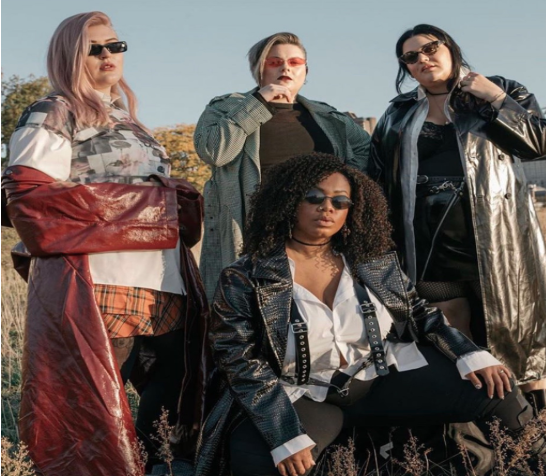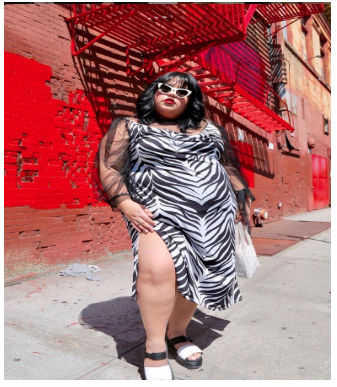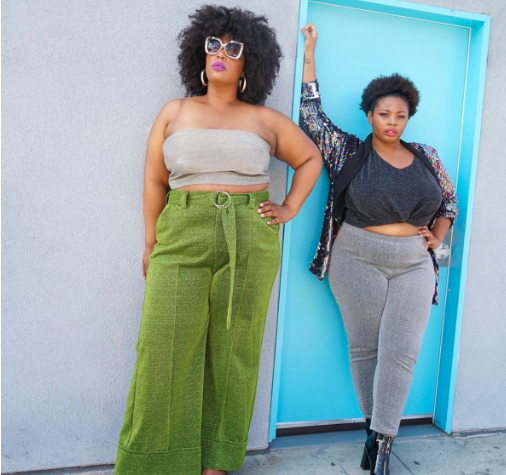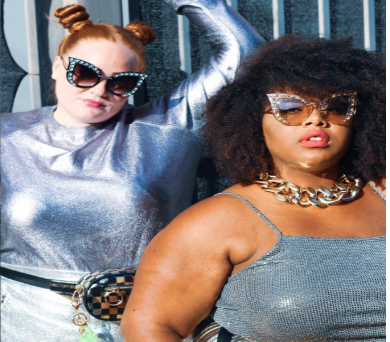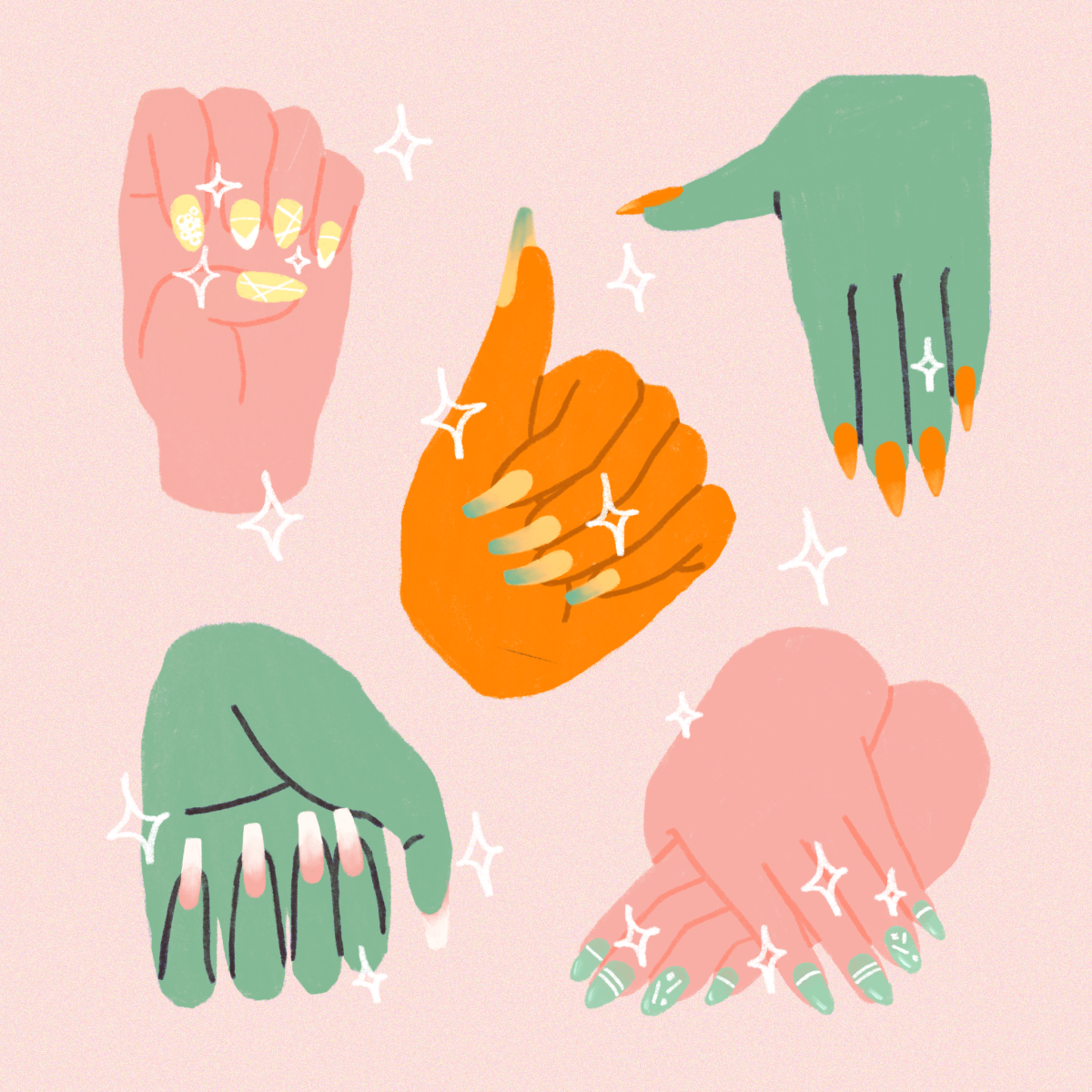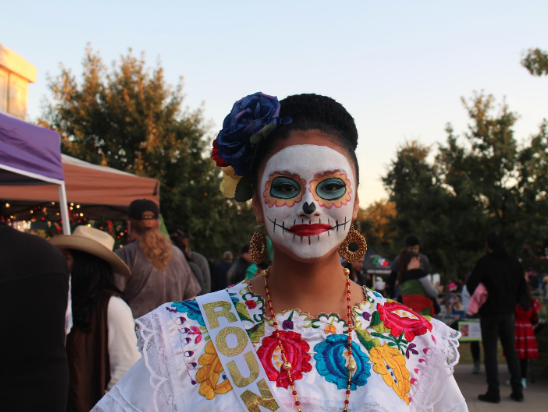Photo courtesy of @eloquii
Finding cute clothes as a fat person can be frustrating, especially when the fashion industry limits our options and forces us to shop at the back of the store – out of sight, out of mind.
By Roxanna Sanchez/ @_roxannasanchez
There comes a time in every fat person’s life when they realize that the fashion gods have cursed and banished them to a suffocating dressing room in hell, trying on clothes three-sizes-too-small for all of eternity.
In fashion, it’s a sin to be fat. Dare I say, it’s even worse than wearing socks with sandals or jean shorts – jorts, if you will.
We beat ourselves up for it, because it’s our “fault” that we do not fit into clothes based on restrictive weight limits. It’s our fault and we should be grateful for whatever thin people manage to give us. This mentality that posits the words “fat” and “fashionable” cannot be synonyms. Fat people don’t care about the clothes they wear. The fashion industry feeds this notion, forcing “plus-size” children and adolescents to shop in adult sections and making matronly-looking clothes for bigger women. This compromise between style and size is unnecessary. It leaves us scrambling for whatever sizes are available in clothes we actually like.
However, with the rising popularity of online shopping and the body positive movement, we hold brands and the fashion industry accountable. Fat people enjoy wider access to stylish clothes. Yet shopping as a “plus sized” person is still wildly confusing..
Some popular and fast-fashion brands now offer larger sizes, but often only in junior plus sizes, which are not at all reflective of fat shoppers. This is simply a way around making clothes for bigger bodies. Brands like Forever21 and H&M carry plus-size clothes that cut smaller in the hips and bust area with the idea that young women buying these clothes are less developed. Even more frustrating, these brands do not specifically make clothes for fat people; instead, they extend the sizes for their current designs. They do not understand the realities of creating well-fitting clothes for us.
While a long sleeve shirt may fit regularly on the chest and torso, it may be tight around the arms. You could be a size 14 and find yourself fitting in a 1x all the way to a 3x due to various size charts and metrics used by different companies. It’s infuriating to have to whip out a measuring tape while online shopping – it’s not like fat individuals can go into stores and try on items they want – there are stores rarely carry large sizes on the sales floor. At my size I find it difficult to walk inside any random store and choose as I like. In fact, according to the International Journal of Fashion and Design, Technology and Education, the average American woman wears between a size 16 and 18 or a plus size 20W. Where is the representation?
Photo courtesy of @thisisjessicatorres
Few sites like Torrid and Eloquii specialize in plus size clothing. Torrid, in particular, runs from a size 10 to a 30 while Eloquii offers sizes 14 to 28. Before the introduction of online shopping, fat people altered their clothes, visited tailors or modified thrift finds in order to work around the system that excludes us.
Photo courtesy @theplusbus
Although online shopping is a great resource, social media is also instrumental in promoting and highlighting fat people who make clothes for other fat people. Although indie brands like Ungr8tful, Zelie for She and Proud Mary Fashion run at a higher price, the intended audience is solely fat women.. Other options include resale clothing stores like The Plus Bus that is based out of Los Angeles, CA. The plus-size duo behind this size inclusive thrift shop only sell items size 12 and up.
Photo courtesy of @theplusbus
Lately, fashion brands face backlash over the lack of inclusivity. It is important to note that the most effective way to make fat people feel welcome as a part of the industry is to hire and promote plus-size designers, business owners and employees; each with a story of their own. They know what shopping for a bigger body is like. We need more people in the fashion industry like Ashley Nell Tipton, season 14 winner of Project Runway, to cater to plus size people and stand amongst the leading moguls in fashion and speak up for the plus-size community. Only then can the industry accept the fact that we can be both fat and fashionable.































